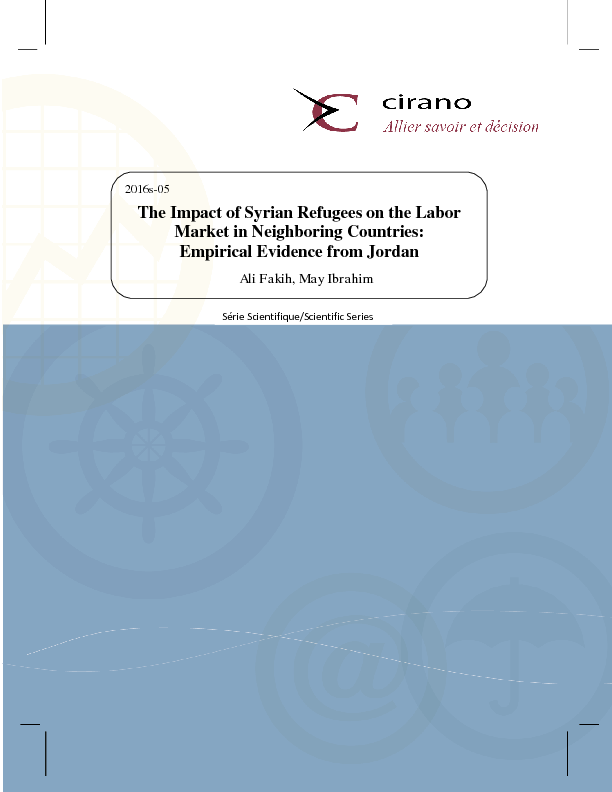The Impact of Syrian Refugees on the Labor Market in Neighboring Countries: Empirical Evidence from Jordan
This paper analyzes
time-sensitive data on a humanitarian crisis in the Middle East. It aims to
assess the impact of the steep influx of Syrian refugees into Jordan on the
country’s labor market since the onset of the conflict in Syria (March 2011).
As of August 2014, nearly 3 million registered Syrians have sought refuge in
neighboring countries (Lebanon, Jordan, Iraq, and Turkey), according to the United
Nations High Commissioner for Refugees (UNHCR). Jordan and Lebanon are hosting
the majority of them. This paper utilizes data regarding unemployment rates,
employment rates, labor force participation, the number of refugees, and
economic activity at the level of governorates. The Vector Autoregressive (VAR)
methodology is used to examine time series data from the most affected governorates
in Jordan. The empirical results of Granger causality tests and impulse
response functions show that there is no relationship between the influx of
Syrian refugees and the Jordanian labor market. Our results are verified through a set of robustness checks.
[ - ]




